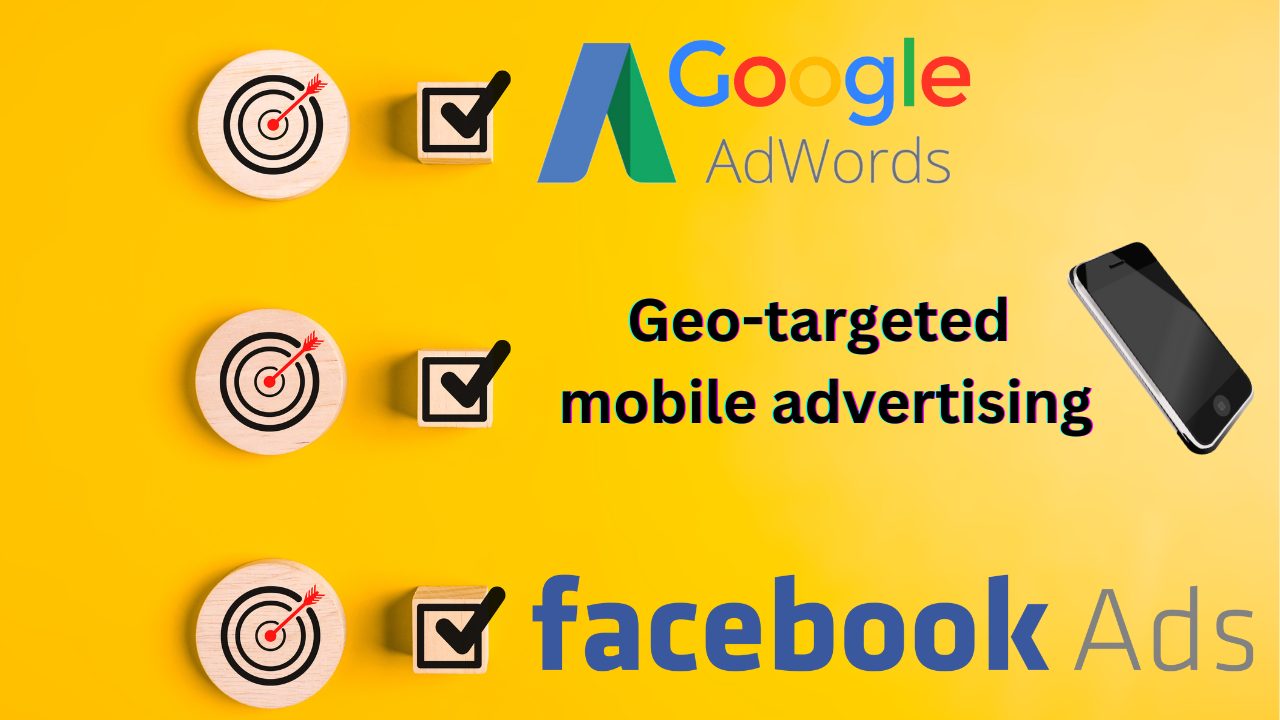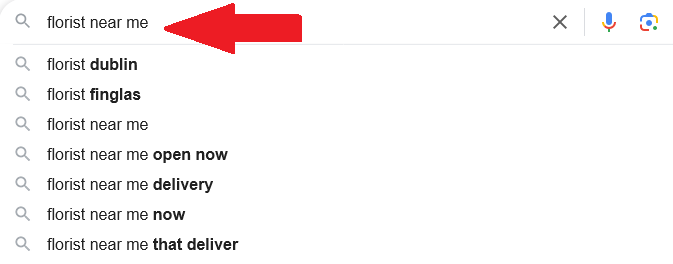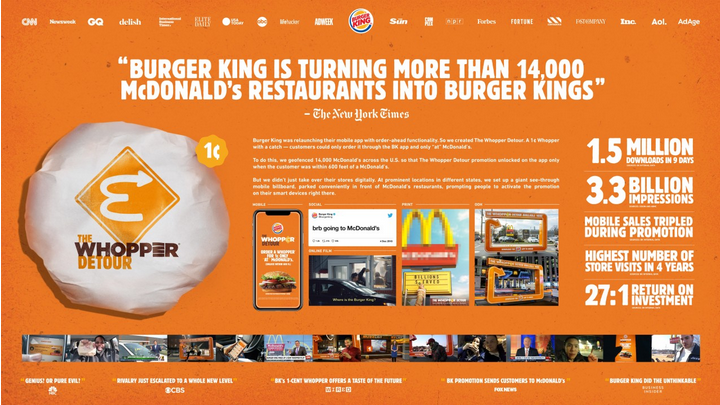In today’s digital age, businesses face fierce competition for attention. Grabbing the eye of potential customers passing by your store can be a challenge.
But what if you could reach them directly on their phones, at the exact moment they’re near your location?
Location-based advertising offers a powerful solution for businesses looking to target local customers. This innovative strategy allows you to send targeted messages to smartphones based on a user‘s location, increasing brand awareness and driving foot traffic.
Let’s break down the nuts and bolts of geo-targeting, the top platforms to use (like Facebook and Google), how geo-fencing also plays a role and how it can all increase your customer base and revenue.
What is geo-targeting?
Geo-targeting is a strategic method used by businesses to enhance their marketing efforts, targeting customers based on their geographical locations.
This approach allows for personalized marketing at scale, ensuring that your advertisements and content are shown to audiences in specific areas who are more likely to be interested in your products or services.
Foundational Overview
Think of geo-targeting as a way to ensure your marketing is not just broad shots in the dark but focused communications aimed at specific groups of your customer base. It ensures the right people see your message at the right time, which is essential for increasing engagement and maximizing advertising spend efficiency.
Why It Matters
By targeting a specific area—whether it’s a city, a neighborhood, or even a particular block—you can tailor your messages to reflect local tastes, events, or even weather conditions. This not only increases the relevance of your ads but also significantly boosts the chances of conversion.
Practical Example:
Consider a local bookstore in Seattle that wants to increase foot traffic during a rainy week. Using geo-targeting, the store sets up digital ads for a cozy reading event complete with hot chocolate, targeting users within a 5-mile radius who have shown interest in books (based on their past browsing data).
This ensures the ad reaches potential customers who are likely to visit due to their proximity and interests, boosting both attendance and sales.
Geolocation ads: How does geo-targeting work?
Geo-targeting tailors the delivery of digital ads based on the physical location of users, using specific data points to enhance the relevance of marketing messages.
Here’s how it’s implemented:
- Data Collection: Geo-targeting begins by collecting geographic locations through methods like GPS tracking, Wi-Fi signals, and cell tower data. Each method offers varying accuracy levels, from pinpointing exact zip codes to broader types of location.
- Integration: This location data is then integrated into ad platforms. These platforms use algorithms to process this data, allowing for the dynamic targeting of ads based on current user locations.
- Ad Delivery: When a user‘s location aligns with the targeted criteria, the system delivers tailored ads. This might include special offers from retail stores or promotions for nearby services, significantly improving the user experience by providing timely and relevant content.
- Engagement Tracking: The success of geo-targeted campaigns is measured by analyzing user engagement rates. This data helps advertisers optimize future campaigns, making mobile targeting more effective and increasing the impact of ads to users.
Practical Example:
A popular food delivery service wants to promote a new partnership with a chain of sushi restaurants. They use geo-targeting to send promotional offers to users located near these restaurants. The service collects location data through the app via GPS and matches it with the zip codes where these restaurants are booming.
As users enter these zones during lunch hours, they receive targeted ads offering a discount on their first order from the sushi menu, directly influencing their dining decisions at the moment.
Geo-fencing vs. geo-targeting
Geo-fencing and geo-targeting are both powerful tools in location-based technology, improving marketing strategies through geographic location. But what sets them apart?
Geo-targeting reaches a broad customer base by adjusting ads to customers based on their current location, improving conversion rates and customer experience. It’s versatile, perfect for campaigns aiming to influence consumer behavior over larger areas.
Geo-fencing, however, sets a virtual boundary around a specific business location. When someone enters this zone, they receive real-time, personalized messages or special offers, boosting immediate engagement and sales opportunities, ideal for physical stores.
Choosing between them depends on your advertising goals: Do you need targeted reach or local immediacy? Each method offers unique benefits to engage customers effectively and drive your business’s marketing campaign.
Practical Example – step by step:
1 – A regional garden center has two main goals: attract local hobbyists to its gardening workshops and increase awareness of its landscaping services within a 50-mile radius.
2 – For the workshops, they use geo-fencing to send notifications about upcoming events to users who enter nearby gardening hotspots or competitors’ locations.
3 – For the landscaping services, they employ geo-targeting to reach homeowners across the wider region, displaying ads on social media and search platforms geared towards audiences interested in home improvement.
Best platforms for location-based ads
To excel in digital marketing, understanding how to use location-based advertising tools is key.
Whether you choose Facebook for its demographic targeting, Google for search-based ads, or mobile ads for on-the-go user engagement, each platform provides unique advantages to connect effectively with your desired audience.
Location targeting on Facebook: Facebook geo-targeting ads and radius targeting
Let’s say you’re running a gallery in Toronto and you want to draw more visitors, Facebook’s location targeting can be a standout tool. This feature helps you show your ads to people who are most likely to visit because they’re right in the area or have shown interest in similar cultural spots.
How to Set It Up
- Choose Your Location: Start in the Ads Manager. Set up your target audience by selecting the location you want, in this case, it could be the Distillery District and surrounding areas like Kensington Market and Yonge-Dundas. These are places locals and tourists flock to for culture and shopping.
- Refine Your Reach: Adjust your settings to target art lovers by choosing demographics and interests that align with past visitors to art events. This makes sure your Facebook ads aren’t just seen, but reach the right people.
- Launch and Adjust: Once your ad is live, keep an eye on how it’s performing. Facebook provides tools to help you see which parts of Toronto are engaging most, so you can tweak your settings to better target potential visitors next time.
Why It’s Effective
This targeted approach helps you connect with people who are most likely to appreciate your gallery. By focusing on specific areas known for arts and culture, you improve the chances that passersby will decide to stop in – making your marketing efforts smarter, not broader.
Geotargeting in Google
Geotargeting with Google is also a robust tool for any business aiming to optimize its local marketing efforts. It’s a smart choice for amplifying visibility and engagement through precisely targeted advertising.
How It Stands Apart from Facebook
- Greater Reach on Search: Unlike Facebook, which focuses on social media users, Google geotargeting impacts users actively searching for relevant local services or products, which can lead to higher conversion rates.
- Integration with Search Results: Google ads appear in search results and maps, making them more integral to user navigation and decision-making processes, unlike Facebook’s social feed placements.
Why It’s Effective
- Precision Targeting: Pinpoint potential customers in specific locales—from countries down to zip codes.
- Enhanced Mobile Reach: Optimize ads for mobile devices, catching users on the go.
- Boosts Local Visibility: Increases your business’s presence in local searches, crucial for proximity marketing.
- Drives customer engagement: More relevant ads mean better engagement rates, keeping your audience interested and interacting longer.
Setting it up is straightforward:
1 – Just log into your Google Ads account, select ‘Locations’ under campaign settings, and specify your target areas.
2 – Choose your “presence” strategy (see pic above for both options)
3 – Adjust your strategies based on analytics to keep your campaigns fresh and focused.
Tailoring your content to local audiences not only boosts your visibility but also builds a stronger community connection, making every ad dollar work harder.
Geo-targeted mobile advertising
Geo-targeted mobile advertising is a dynamic way to connect with target consumers right where they are – using the apps they love most.
This approach is especially effective because it taps into the daily habits of app users, offering them services and products exactly when and where they might need them.
Why It Works So Well
- Reach Beyond the Browser: Unlike traditional online ads that rely on users being on a specific website, mobile ads meet app users right inside their favorite apps—whether they’re checking the weather, playing a game, or reading the news.
- Customization and Relevance: Ads can be tailored not just by location, but also by the user’s past app activity, ensuring that what you send is relevant to their interests and more likely to draw engagement.
- Building a Deeper Connection: This method also helps forge a deeper connection with your audience by being part of their mobile ecosystem, blending naturally into their app experience without feeling intrusive.
Geo-targeted ads examples
Now that we’re familiar with the platforms, let’s look at a strong example of each one:
Facebook geo-targeting example
Japanese clothing giant UNIQLO leveraged Facebook check-ins to boost visibility and traffic during their annual sales in 2012.
They created a campaign – the “Check-in Chance” – that encouraged users to check in at their stores for a chance to win a prize, which significantly increased both foot traffic and sales over a three-day period. This campaign showed how integrating social engagement with location targeting can create a buzz and draw crowds
Geotargeting in Google example
Consider a local florist using Google’s geo-targeting to enhance visibility:
- Targeted Reach: Google Ads allows the florist to display their ad specifically to users searching for flowers within a few miles of their location.
- Strategic Advertising: By targeting potential customers nearby, the florist ensures their advertising budget is spent on those most likely to visit the shop.
- Local Engagement: This focused approach helps the florist connect directly with the community, increasing foot traffic and sales during key floral holidays like Valentine’s Day and Mother’s Day.
Geo-targeted mobile advertising example
In 2018 Burger King executed a bold geo-conquesting campaign by targeting users within proximity to McDonald’s outlets. They offered a promotional deal via their app if the user was near a McDonald’s, successfully diverting traffic from their competitor.
This use of aggressive location-based targeting not only increased sales but also highlighted the potential of creative geo-targeting strategies.
Want to implement a location-based ad strategy? We can help!
Ready to maximize your local market impact?
Let Nomadic Advertising guide you with tailored geo-targeting strategies.
Book a free 30-minute consultation now and discover how the right location-based ads can unlock new business opportunities, steering customers straight to your doorstep.
Together, we’ll map out your route to success.
If you enjoyed this article consider reading our Beginners Guide to Facebook Geofacing.
Key Takeaways
- Harness location-based ads to increase visibility and foot traffic.
- Use geo-targeting to deliver timely ads to relevant local audiences.
- Choose the right platform for specific campaign goals and audience engagement.
- Integrate mobile advertising to reach users on their most used devices.















